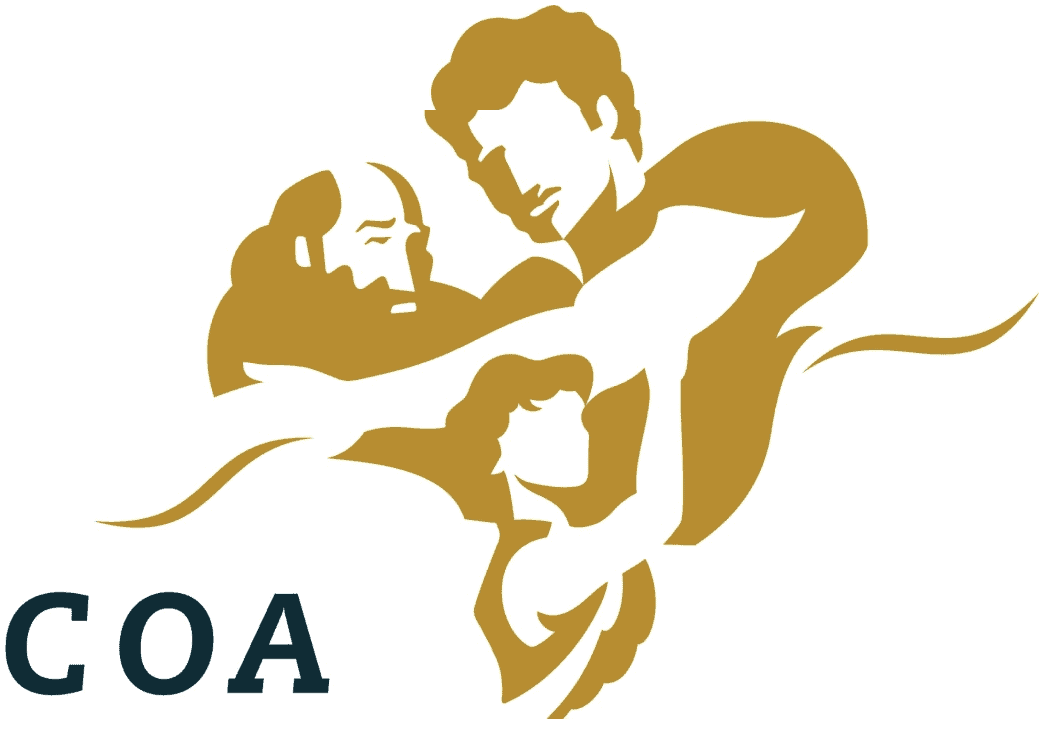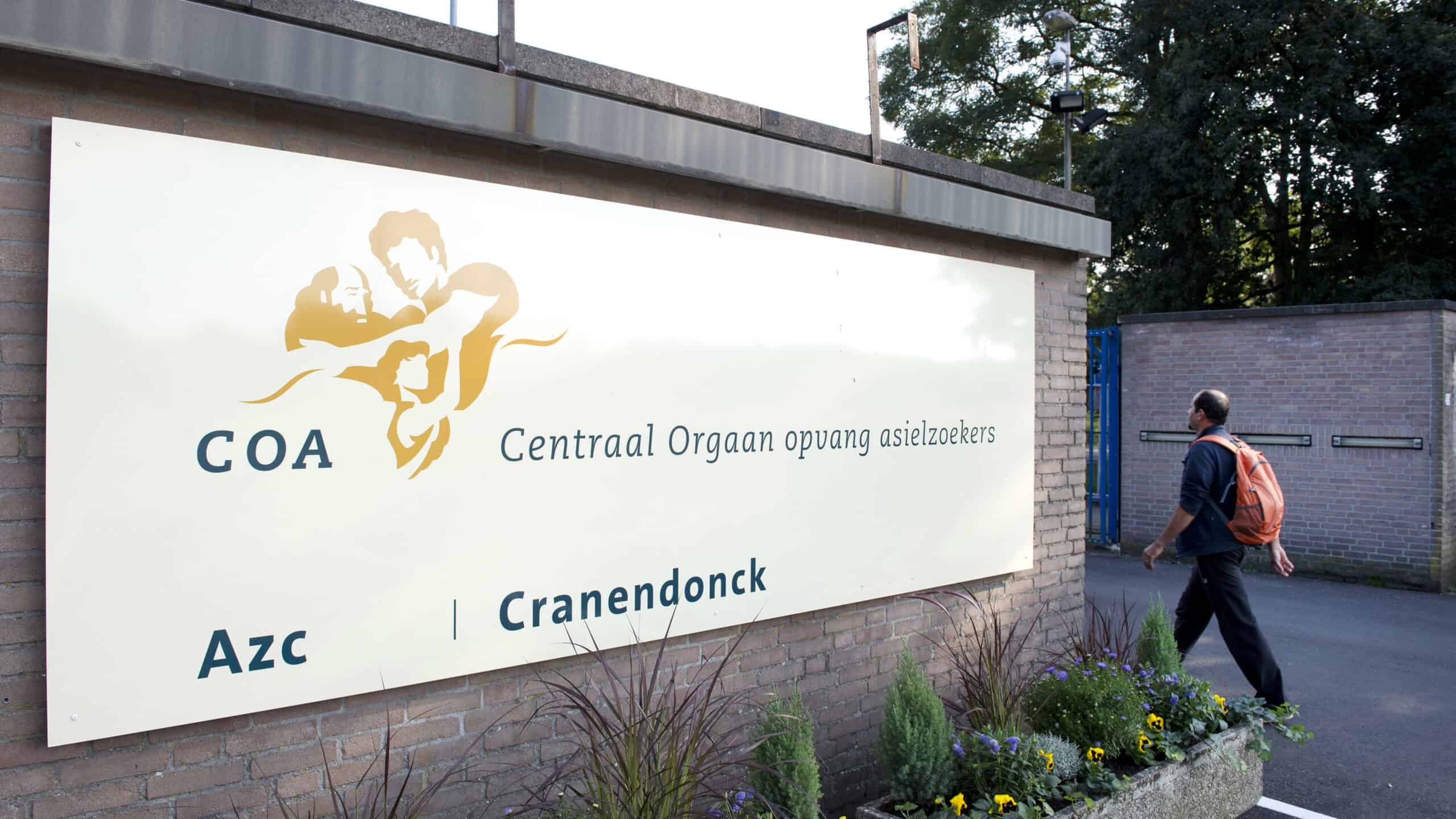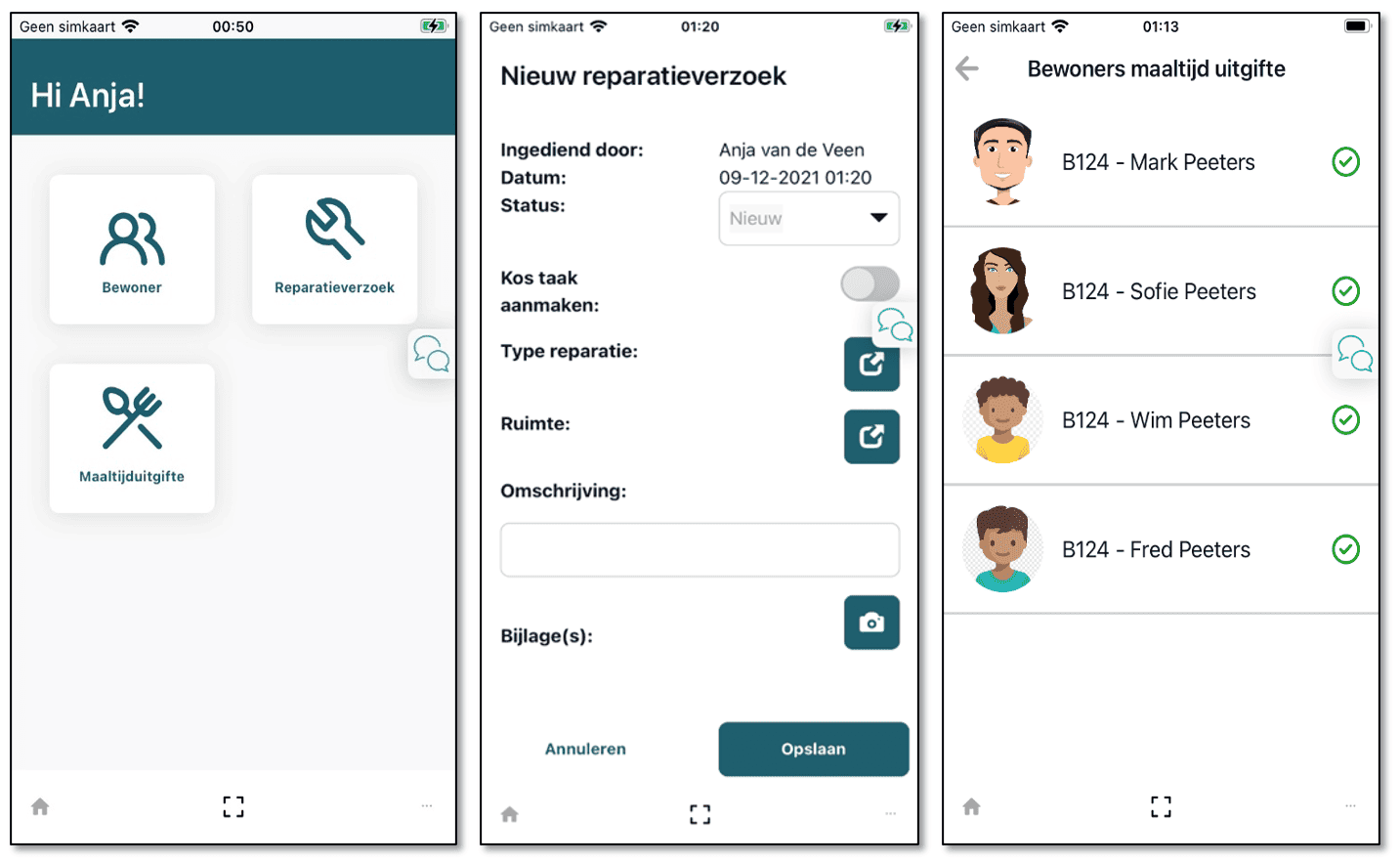
Improve Efficiency and Resident Services with a Native Mobile App

Tens of thousands of asylum seekers flee to the Netherlands every year. These individuals, who have left their home country in fear of persecution or dangerous situations, will look to public assistance organizations for support during the asylum process.
In the Netherlands, The Central Agency for the Reception of Asylum Seekers, or COA, is responsible for the reception of these individuals. For over twenty years COA has provided asylum seekers safe accommodations upon their arrival and the resources for a successful future.
With 130 centers around the country, the organization prides itself on its dedication to the well-being of its inhabitants and employees. However, shortages in budget, staffing, and technology have made it challenging for COA to meet the increased demand for their services in recent years.
“We need to grow 150% in the coming years,” explained Gerrit de Lang, Digital Innovation Manager at COA. “The first reaction is to increase headcount, but we simply don’t have enough staff or locations.”
With the rise in mobile phone use amongst their employees, COA saw low-code development as a means to bridge the digital divide and rapidly deliver more modern, digital solutions to support employees and residents. COA leveraged Mendix to develop a native mobile application that would digitize employee work, boost safety in their shelters, and serve as a first step towards greater innovation.Today, over 300 COA employees utilize the new application across four shelters to streamline operations and improve their residents’ experience.
Organizing Around Innovation
After arriving in the Netherlands, asylum seekers are given at least six days to recover from their travels and prepare for the asylum process. COA provides these individuals various levels of support once they are cleared by the Ministry of Justice. During the General Asylum procedure, the organization assists with:
- Scheduling legal appointments
- Distributing meals
- Offering activities
- Providing general guidance for acclimating to life in the Netherlands
At the shelters themselves, residents can voluntarily work, attend educational programs, like Dutch lessons, or participate in the location’s daily activities until they receive their asylum status. Once given permission to stay in the Netherlands, COA supports residents until they are assigned housing in a municipality.
Before Mendix, COA employees relied on manual work to manage resident services within the community. “The employees were taking notes on paper, and when they were at their desk, they would just enter the same information into the existing system. It was time consuming,” explained Sinan Karakurt, External Mendix Consultant at HULQ, a Dutch IT service company and expert Mendix partner.
COA placed a renewed emphasis on leading with technology and making larger investments in innovation to increase efficiency across their locations. To achieve this goal, they sought a new development platform which would be cost-effective and resource-efficient for a public sector organization, which led them to evaluate low-code platforms in 2014.
“We were looking for alternatives and, in those days, the idea was that low-code could replace the high-code platform we had,” shared Michiel Bennebroek, Innovation Manager for COA. They evaluated other platforms, including OutSystems, but ultimately selected Mendix for its:
- Leadership status in analyst reports
- Maturity in the Dutch market
- Track-record of powering similar solutions at other organizations
In 2017, COA adopted Mendix and conducted a proof of concept. A Mendix product release coincided with COA’s focus on innovation in 2020, bringing about the idea for a native mobile use case.
“In those days, Mendix started to mature the platform and their mobile offering with Mendix 8 and 9. We wanted offline capabilities, and in 2020 the new versions of Mendix brought just that,” explained Bennebroek. “We also saw that the processes employees manage — documenting departures, checking resident rooms, going to medical offices — could have ten steps cut, and we could optimize that process by building in Mendix.”
Digitizing Employee Operations
Despite the many challenges of the pandemic, an opportunity presented itself for COA to engage their employees digitally as their workforce was given mobile phones. “Before, everything we provided for our employees was just one or two laptops or desktops and that’s it. It was very hard to carry them around in a shelter,” Bennebroek shared.
COA started developing their native mobile app in the Fall of 2021 and reached a successful proof of concept by December of that same year, which was rolled out to two of COA’s shelters for testing and fine-tuning of security requirements. By December of 2022, a new project team was formed to get the application ready for a broader rollout to other shelter locations. The project team consisted of a developer, product owner, and application manager who worked with COA’s employee users.
“All of the people involved in developing the solution gathered ideas and requirements directly from the users, and that is how the functionalities were born,” recalled Karakurt.
Once COA employees acquired their new devices, the Employee Mobile Application supported them with three daily processes:
- Identity verification: Identifying inhabitants is a regular practice across COA locations. Residents are given a bank card with a QR code that can be scanned on the app. There are also QR codes in every inhabitant’s room. Once scanned, employees can instantly see who’s in front of them or who lives in a specific room, along with information such as the inhabitant’s name, room number, social security number and other identifying data.
- Maintenance requests: Employees can take pictures of any maintenance issues and submit a repair request. They specify in which room there is an issue, add a short description, attach a picture, and submit the request instantly.
- Meal distribution: For locations serving meals, employees can scan bank card QR codes and see if a resident has already had a meal or not.

With a ratio of one COA employee per ten residents in the shelters, time spent on manual work would previously interfere with efficiency. Now, COA workers save anywhere from thirty to sixty minutes per day using the Employee Mobile Application, roughly 1,600 minutes per FTE or between €11M and €38M annually.
The real-time repair requests allow employees to notify the maintenance team anywhere from ten to fifteen minutes faster than when they relied on pen and paper. The application architecture makes setup at new locations seamless and the intuitive UI allows COA to onboard employees to the platform rapidly.
Safety and Security by Design
Another critical aim of the Employee Mobile Application was to increase safety and security for both residents and employees.
Time saved by using the application allows COA employees to focus more on improving the quality of life in their shelters, for example conducting more checks to verify that the environment is hygienic or that residents are in the proper room. The increased attention to the physical conditions of the location ultimately creates a greater feeling of support and safety for residents.
Moreover, data security is critical for COA’s systems and Mendix was able to meet their high standards for GDPR compliance and information security.
“We must protect the asylum seekers’ data and keep it very secure,” Benenbroek shared. A geofence in the application offers this protection, as authorized users must be on location to access the application and system, and any changes to data are monitored and logged.
“The Mendix app is wrapped into an enterprise mobility management solution from Blackberry. It takes part of the app’s security, the data, the caching, and all the policies that you want to enforce between the hardware and the software. And we have a very highly secured VPN connection with the data center, which connects the front end of the app to the back end of the app,” he added.
Bridging the Gap with Rapid Development
In addition to bridging the digital divide within the organization, low-code also offers a more flexible and future-ready development environment for new projects within COA. “The big thing was getting to develop an app that can connect to our backend systems for the first time and is stable. This is a big step for COA’s future,” expressed de Lang.
“In the end, this application helps better serve people who are in need. It is meaningful work,” Karakurt added.
Employees were also eager to share input. “In late 2021, we had six employees involved. Now we’re involving every employee. So, at our test locations there’s two key users who also have contact with their colleagues, and they’ll provide us with the feedback,” explained de Lang. “We’re working faster than usual to add value,” added Karakurt.
“We had a lot of help from partners, not only in delivering pieces of the solution, but also in suggesting ideas for pieces of the puzzle to make it all happen. A lot of people I spoke with offered me intelligence, help, and insight that led to the solutions we built. There were many of these people, not only from COA itself, but also from the Mendix community,” Bennebroek expressed.
An IT Vision with Purpose
COA’s Employee Mobile Application has served as a proof point that innovation is possible, even in a highly structured public sector organization, and can be done rapidly with low-code. Development at the organization is now 2–4x faster with Mendix, with less costly application maintenance and roughly €105,000 in annual savings.
While the rollout of the Employee Mobile Application is still ongoing, Bennebroek has plans for expediting delivery and ensuring COA employees across the country have the app readily available.
“This year, we want to not only implement the application as far as we can, but also build more functionality. There are some features already in motion,” he shared. COA plans to build solutions for residents to use directly as well, such as an application to make it easier for residents to communicate with employees and share their information with COA.
“I want to get the organization ready with a support structure to not only maintain the application, but also to build on it,” he added. “We want to make sure that our surrounding communities support COA’s humanitarian goal, and improving the processes and safety on our sites is important for the continuation of our work.” These ambitions reaffirm the organization’s commitment to its residents and employees.